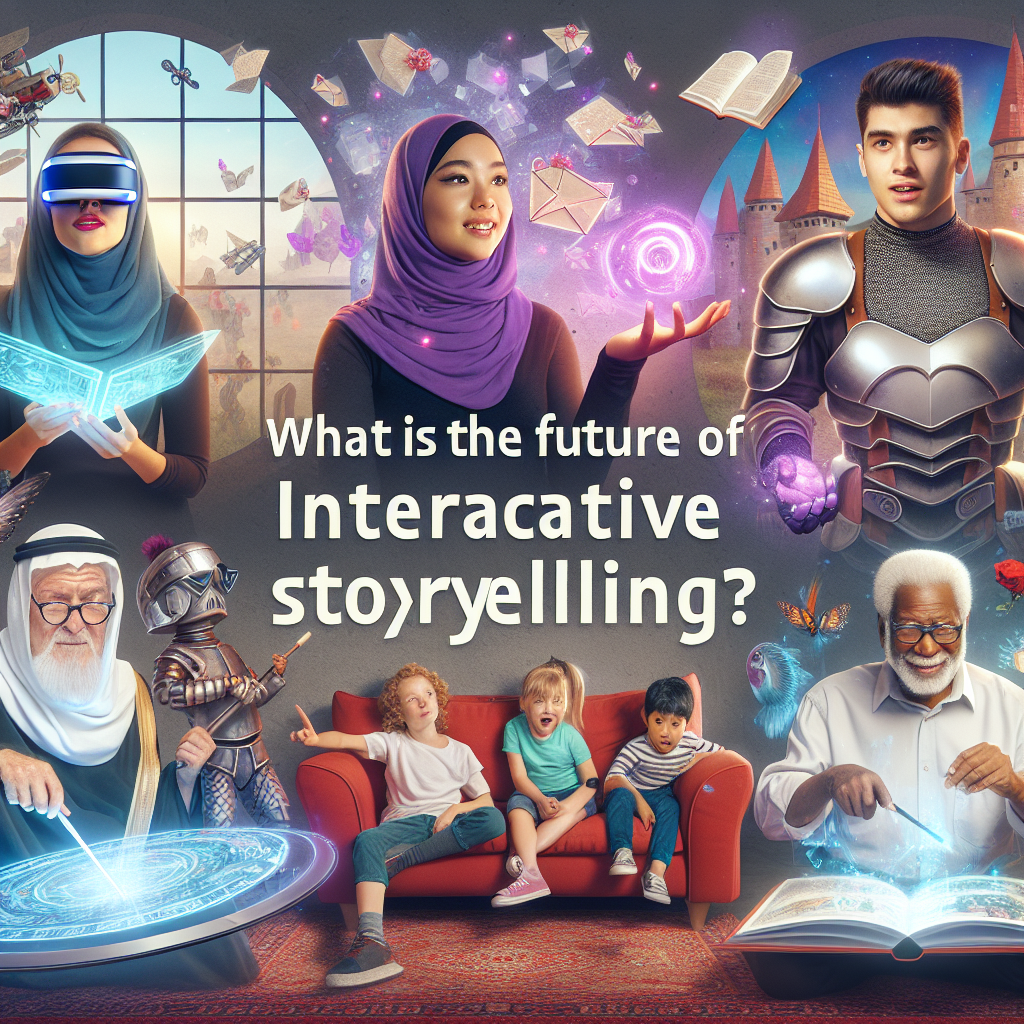Interactive storytelling has been gaining momentum in recent years, with advancements in technology allowing for more immersive and engaging experiences. From video games to interactive movies, this innovative form of storytelling allows audiences to not only passively consume a narrative, but also actively participate in shaping the story and its outcome. As technology continues to evolve, what does the future hold for interactive storytelling?
The future of interactive storytelling is bright, with continued advancements in technology providing even more immersive and personalized experiences for audiences. From virtual reality to artificial intelligence, new tools and platforms are constantly being developed to push the boundaries of interactive storytelling. Here, we will explore some of the key trends and developments shaping the future of this exciting new medium.
Virtual Reality: One of the most exciting developments in interactive storytelling is the rise of virtual reality (VR) technology. VR allows users to fully immerse themselves in a digital world, creating a sense of presence and agency that is unmatched by other mediums. With VR, users can explore virtual environments, interact with characters, and influence the direction of the story in real-time. As VR technology continues to improve and become more accessible, we can expect to see even more innovative and immersive interactive storytelling experiences in the future.
Artificial Intelligence: Another key trend in interactive storytelling is the use of artificial intelligence (AI) to create more dynamic and responsive narratives. AI technology can analyze user behavior and preferences in real-time, allowing for a more personalized and adaptive storytelling experience. AI can also be used to create more realistic and engaging characters, who can respond to user input in a more lifelike manner. As AI technology continues to advance, we can expect to see even more sophisticated and interactive storytelling experiences that blur the line between fiction and reality.
Multi-platform Experiences: As technology becomes more interconnected, we can expect to see more interactive storytelling experiences that span multiple platforms. From video games to social media to virtual reality, audiences can engage with a story in a variety of ways, creating a more seamless and integrated narrative experience. This multi-platform approach allows storytellers to reach a wider audience and engage with users in new and exciting ways. In the future, we can expect to see even more innovative and interactive storytelling experiences that leverage the full range of available technologies.
User-generated Content: Another exciting trend in interactive storytelling is the rise of user-generated content. With platforms like YouTube, Twitch, and TikTok allowing users to create and share their own stories, audiences are no longer passive consumers of content, but active participants in shaping the narrative. User-generated content allows for a more diverse and inclusive range of stories to be told, reflecting the perspectives and experiences of a wider range of creators. In the future, we can expect to see even more interactive storytelling experiences that empower users to create and share their own stories, fostering a more collaborative and participatory approach to storytelling.
Frequently Asked Questions:
Q: What is interactive storytelling?
A: Interactive storytelling is a form of storytelling that allows audiences to actively participate in shaping the narrative and its outcome. Through technology like virtual reality, artificial intelligence, and user-generated content, users can interact with characters, explore environments, and make choices that impact the direction of the story.
Q: What are the benefits of interactive storytelling?
A: Interactive storytelling offers a more immersive and engaging experience for audiences, allowing them to become active participants in the narrative. By allowing users to make choices and influence the story, interactive storytelling can create a more personalized and interactive experience that is tailored to the individual preferences and interests of the user.
Q: What are some examples of interactive storytelling?
A: Some popular examples of interactive storytelling include video games like “The Walking Dead” and “Life is Strange,” interactive movies like “Bandersnatch” on Netflix, and immersive experiences like “The Void” virtual reality experiences. These examples demonstrate the diverse range of interactive storytelling experiences available to audiences.
Q: How is technology influencing the future of interactive storytelling?
A: Technology is playing a key role in shaping the future of interactive storytelling, with advancements in virtual reality, artificial intelligence, and user-generated content creating new opportunities for more immersive and personalized experiences. As technology continues to evolve, we can expect to see even more innovative and interactive storytelling experiences that push the boundaries of this exciting new medium.
In conclusion, the future of interactive storytelling is promising, with advancements in technology creating new opportunities for more immersive and engaging experiences. From virtual reality to artificial intelligence to user-generated content, the possibilities for interactive storytelling are endless. As technology continues to evolve, we can expect to see even more innovative and interactive storytelling experiences that push the boundaries of this exciting new medium. Whether you’re a fan of video games, movies, or immersive experiences, the future of interactive storytelling has something for everyone.
